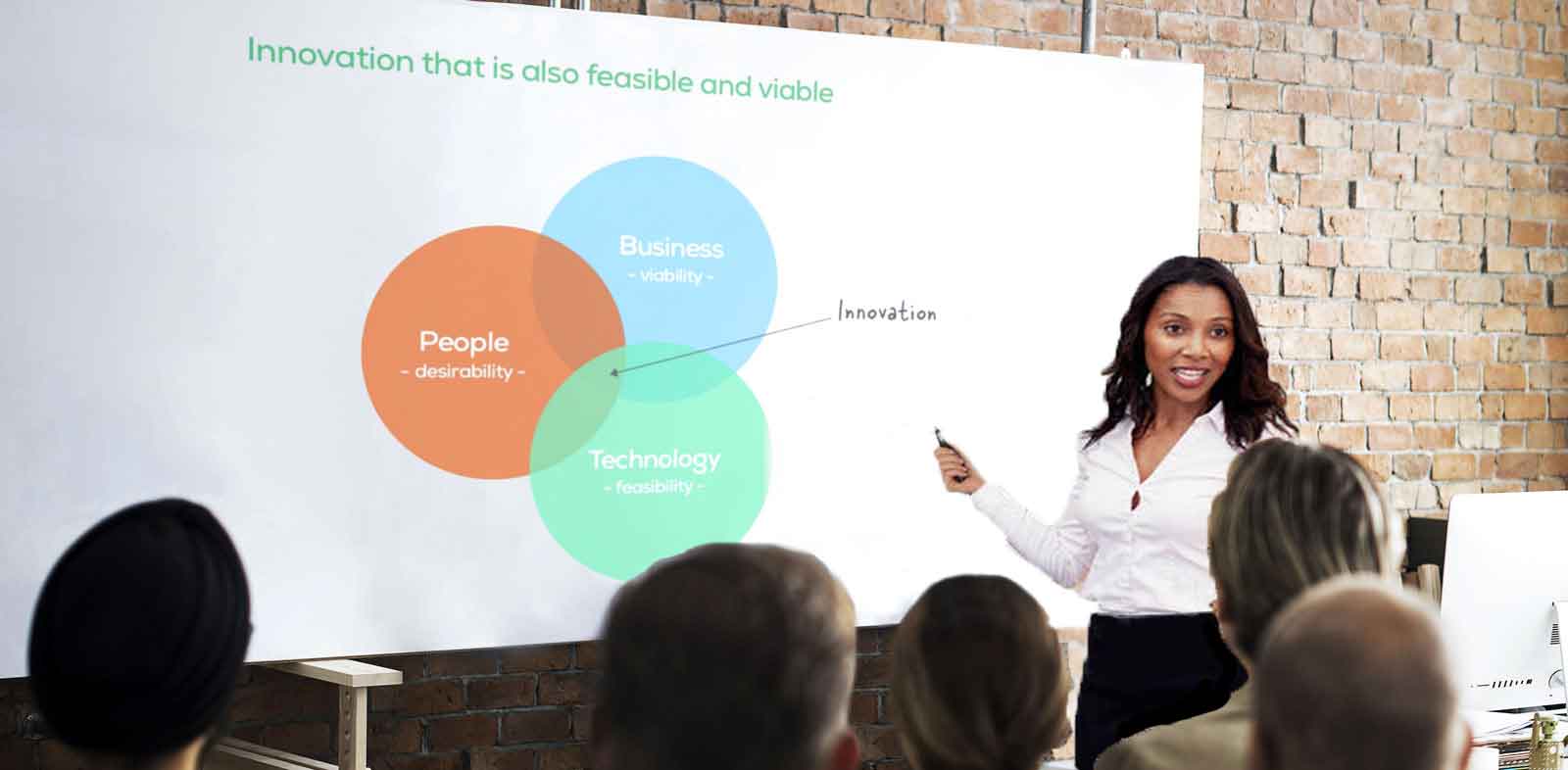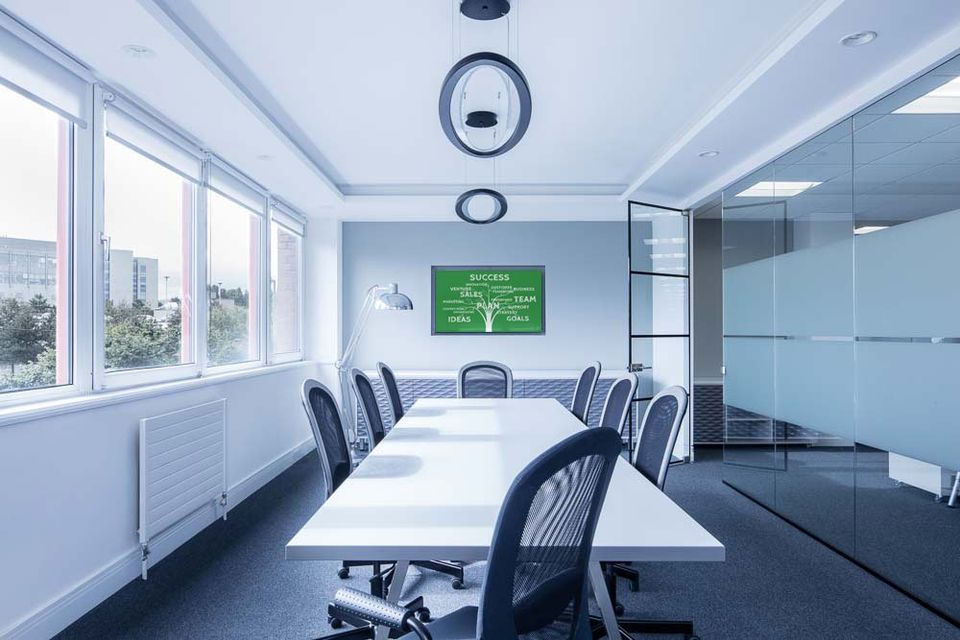Presentation Tips from Clearpresso
February 26, 2020
Presentation Tips with Ed Fidgeon-Kavanagh

Scriba is more than just a stylus: it’s a handy presentation remote that provides discreet haptic feedback when you’re running out of time and lets you annotate your presentation on the fly to better communicate your point. Since we love great presentations here at Scriba we asked Ed Fidgeon-Kavanagh, Chief Presentationist at Clearpreso, for his top presentation tips.
Use The Tool That Works Best For You
Presentations are an exercise in getting a message from your head onto a screen, it’s not really any more complicated than that, and as such there’s not really a “right way” to go about doing it. I think that people should just the use tools and methods they’re most comfortable with whether that be Powerpoint, Keynote, a flip chart or indeed no visual aids at all. Life’s too short to waste time trying to use tools that suit someone else.
Give A Shit
“It’s either a hell yeah or no” — Derek Sivers
Throwing together a crappy presentation is easy, conversly creating a great one is actually really hard and will take a lot of time and effort. So a key factor is that you really give enough of a shit to put in those hard hours. If you don’t care or you’re not excited about the story you have to tell then just don’t bother, a crappy presentation is almost always worse than no presentation at all.
Steal Design From All Around You
“Good artists copy; great artists steal” — Steve jobs
When it comes to designing presentations most people recreate what they have seen before. This is why slide design hasn’t evolved much past the much hated but oft seen slide with endless tiny bullet points. Because of course, that’s how presentations should look right? Wrong.
To end the cycle of crappy presentations it’s necessary to abandon Powerpoint-world and consider examples of good design that can be seen around you in day to day life. Billboards, posters, magazines, websites and even pamphlets in the post all offer better examples and design elements to inspire you than almost all Powerpoints. There are lots of ways to archive the bits and pieces you come across, I take endless screen shots of great design I see online, and snap photos of design I see in the physical world around me. These all end up in a folder I have titled “Inspiration”. At the start of all new projects I have a flick through that folder to get my creative juices flowing.
Stay Away From Gimmicks
Most slide software now comes with a dizzying array of animations, transitions and other sparkly design gimmicks. In general it’s best to steer clear of all of these completely as they almost universally distract from, rather than compliment, your messaging.
Attempting to bring your boring content to life with “exciting” gimmicks just doesn’t work. And in general if the best thing about your presentation are animations and transitions… you should really start from the beginning again!
Slide Count Is Completely Unimportant
Father Ted “Would you like your pizza cut into 6 or 8 slices?”
Father Dougal: “Oh just 6, I don’t think I could eat 8”
People have a strange psychological relationship with “slide count”. I often hear clients tell me that they need a “max 10 slide presentation because I don’t want to bore people”. This adherance to a strict, and totally arbitrary, number of slides actually almost always actually ensures the boredom they were looking to avoid because in the quest to hit the magic number people start cramming 3 slides worth of material into one slide making for a set of slides which are cramped, incomprehensible and completely unengaging.
The best advice here is to broadly keep slides to one idea per slide. Less is more when it comes to content on an individual slide, which may mean you have what seems like a gigantic number of slides, in practice though they’ll take exactly the same amount of time to deliver, but will be much more effective and engaging.
Articles

In the period since COVID forced many of us back home and out of the office, remote work has become the new norm for many. The flexibility of working from home, especially for those with small children, is very compelling, but making a productive workspace is more than setting up a desk in the spare room. More people are seeking to create functional and comfortable workspaces in their homes, however, it can be difficult to strike the right balance between a professional office space and a cosy home environment. Here are some tips for designing a home workspace that meets both of these needs: Dedicate a specific area for work Designating a specific area for work is essential for separating work from leisure time. This could be a separate room or just a corner of a room. It is important to make sure that the workspace is free from distractions and clutter, as this will help you stay focused and productive. Choose the right furniture Ergonomic furniture is key to a comfortable and productive workspace. Invest in a comfortable chair, a desk that is the right height, and a good-quality mouse and keyboard. If you are prone to back pain, consider a standing desk. Add personal touches Just because your workspace should be functional, doesn’t mean it can’t be personal. Add photos, plants, and other personal items to make the space feel like your own. This will help create a sense of comfort and make you feel at home in your workspace. Good lighting Good lighting is essential for a comfortable workspace. If possible, place your desk near a window for natural light. If not, invest in a high-quality desk lamp to provide bright, even light. Keep it organised An organised workspace will help you stay productive and focused. Use desk organisers, filing cabinets, and other tools to keep your work area free from clutter. A clean and organised workspace will also help you start each day with a clear mind. Consider your work style Think about the type of work you do and how you like to work. If you prefer a minimalist workspace, opt for a simple desk and a few basic supplies. If you need space for multiple screens and other technology, make sure you have enough room to work comfortably. Take breaks It’s important to take breaks throughout the day to avoid burnout. Step away from your desk, go for a walk, or do some stretching exercises to clear your mind and recharge.










